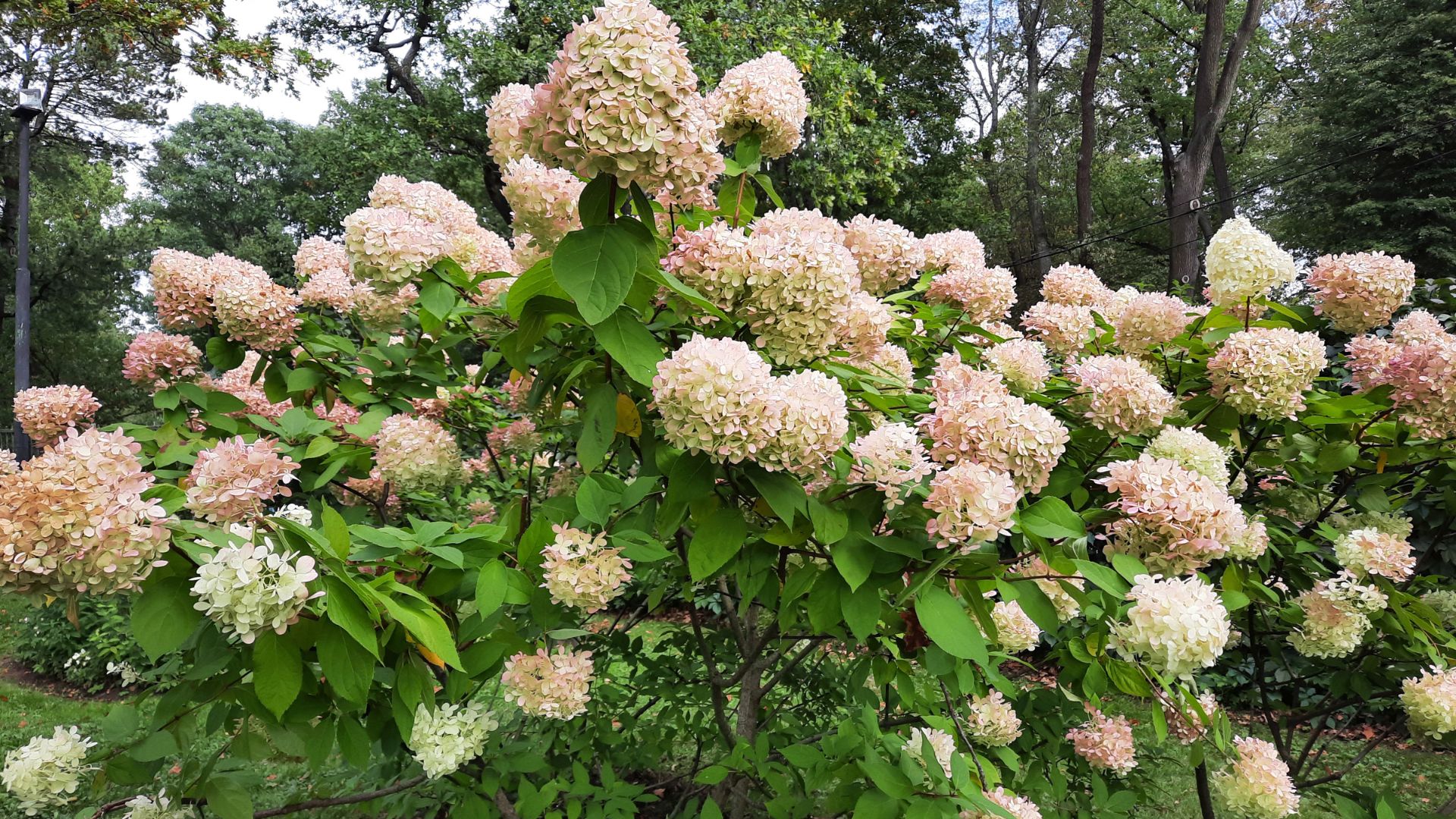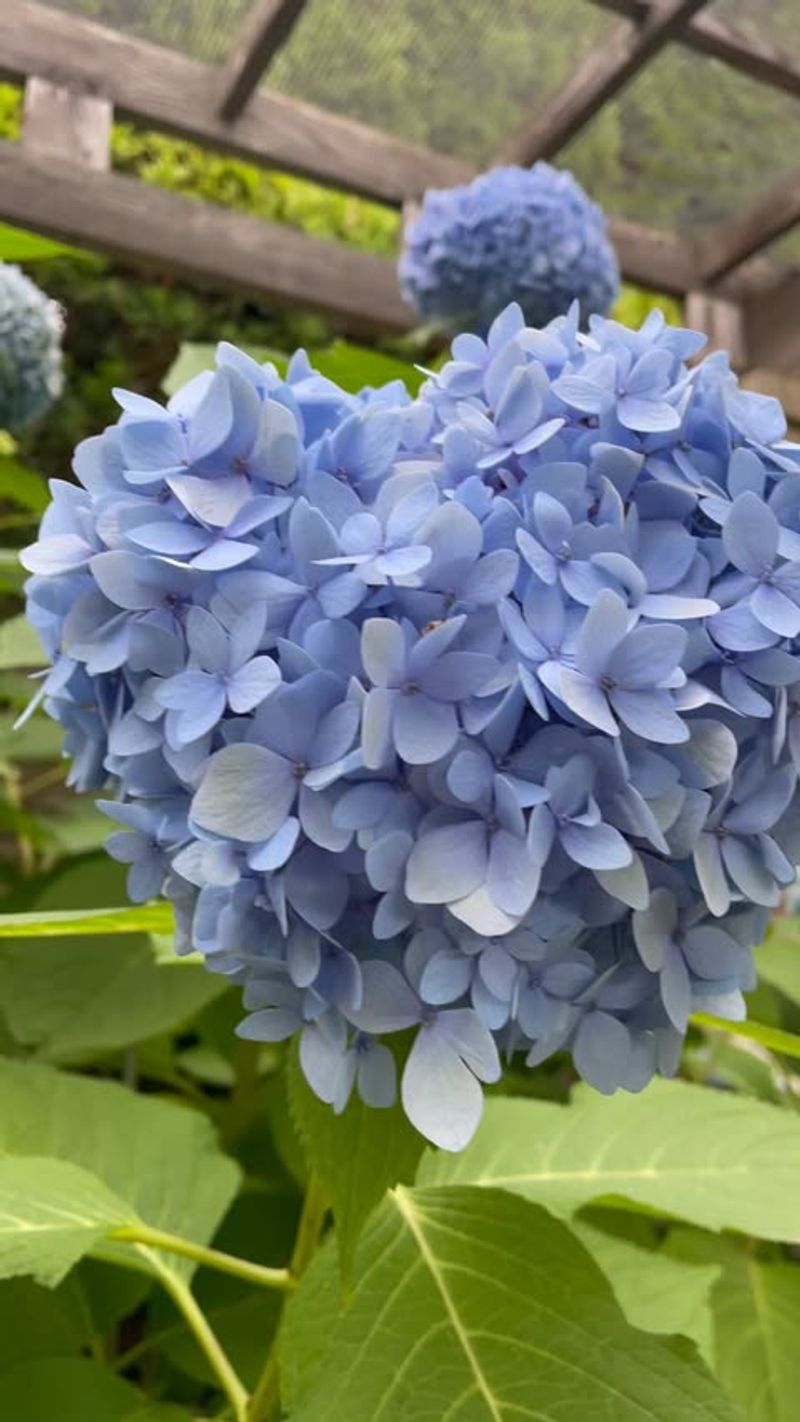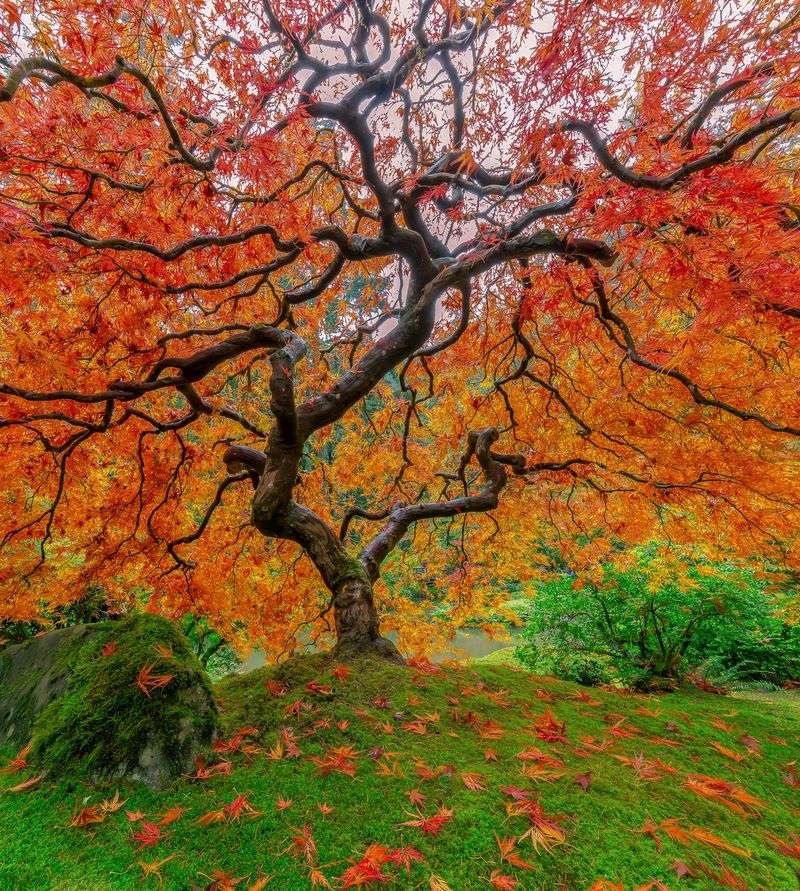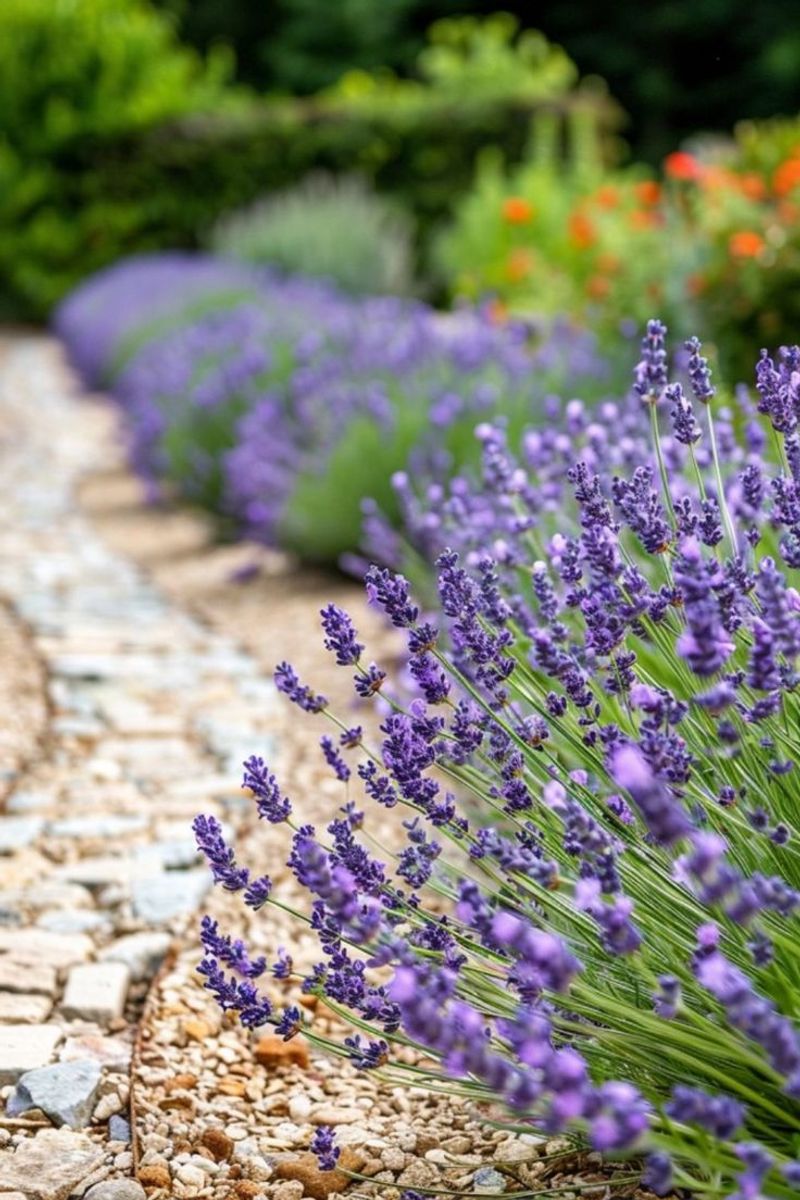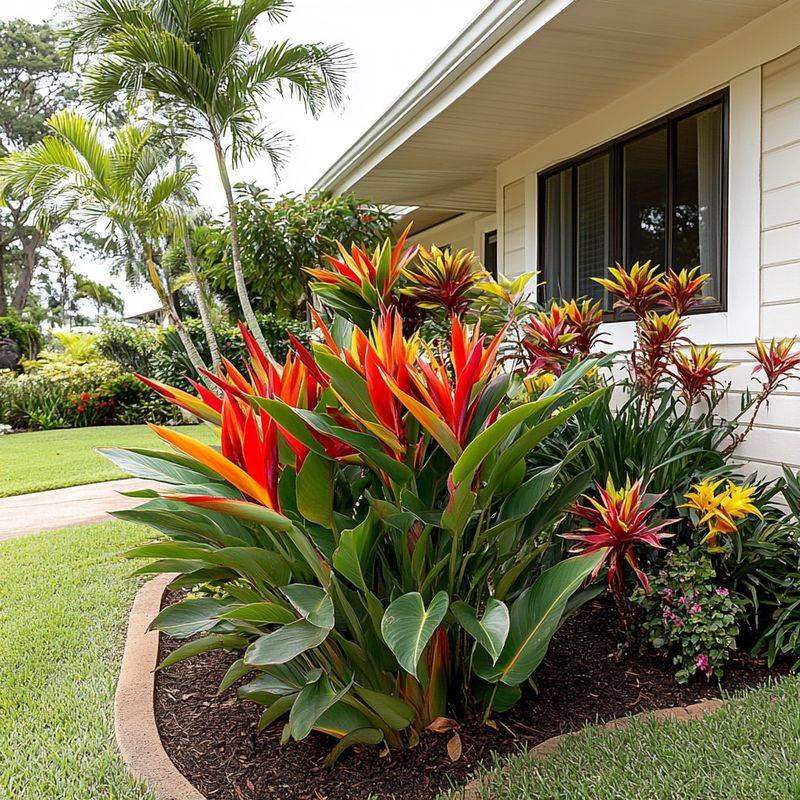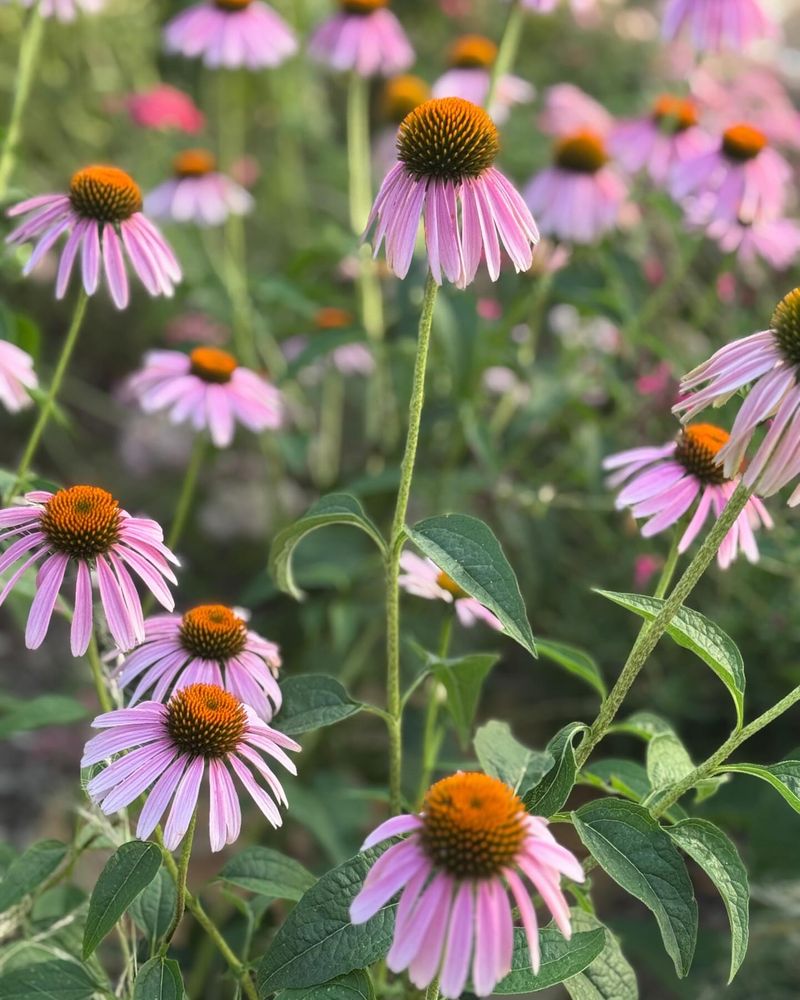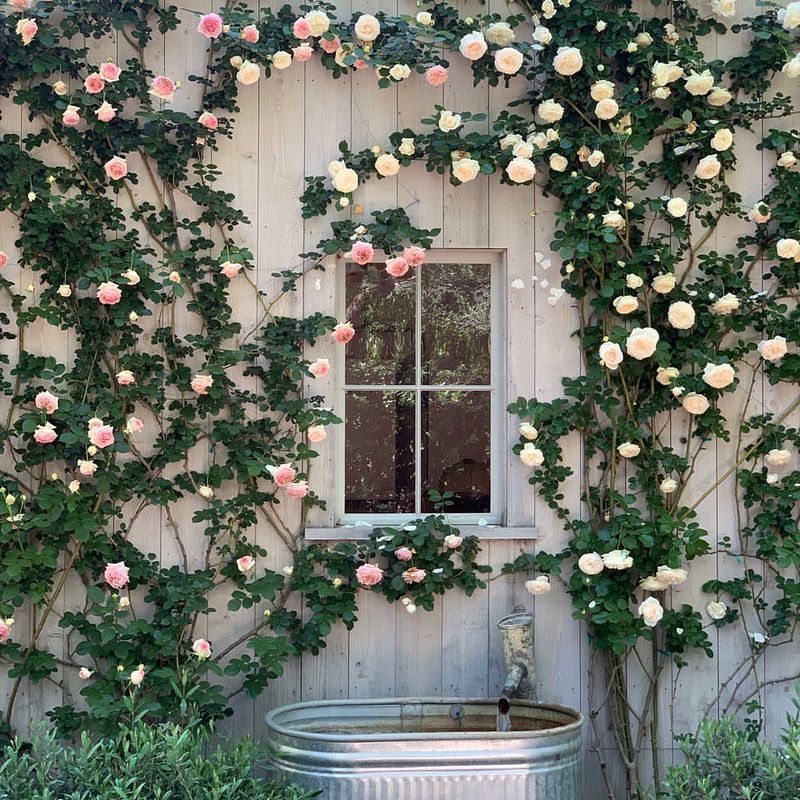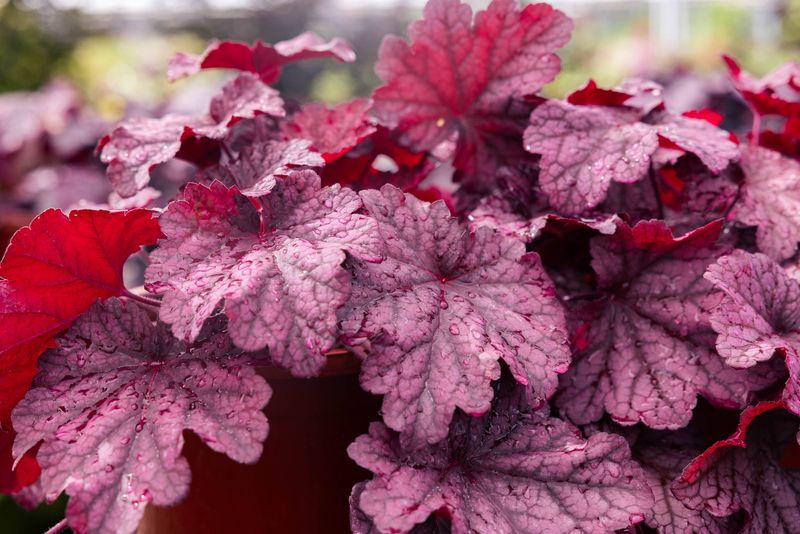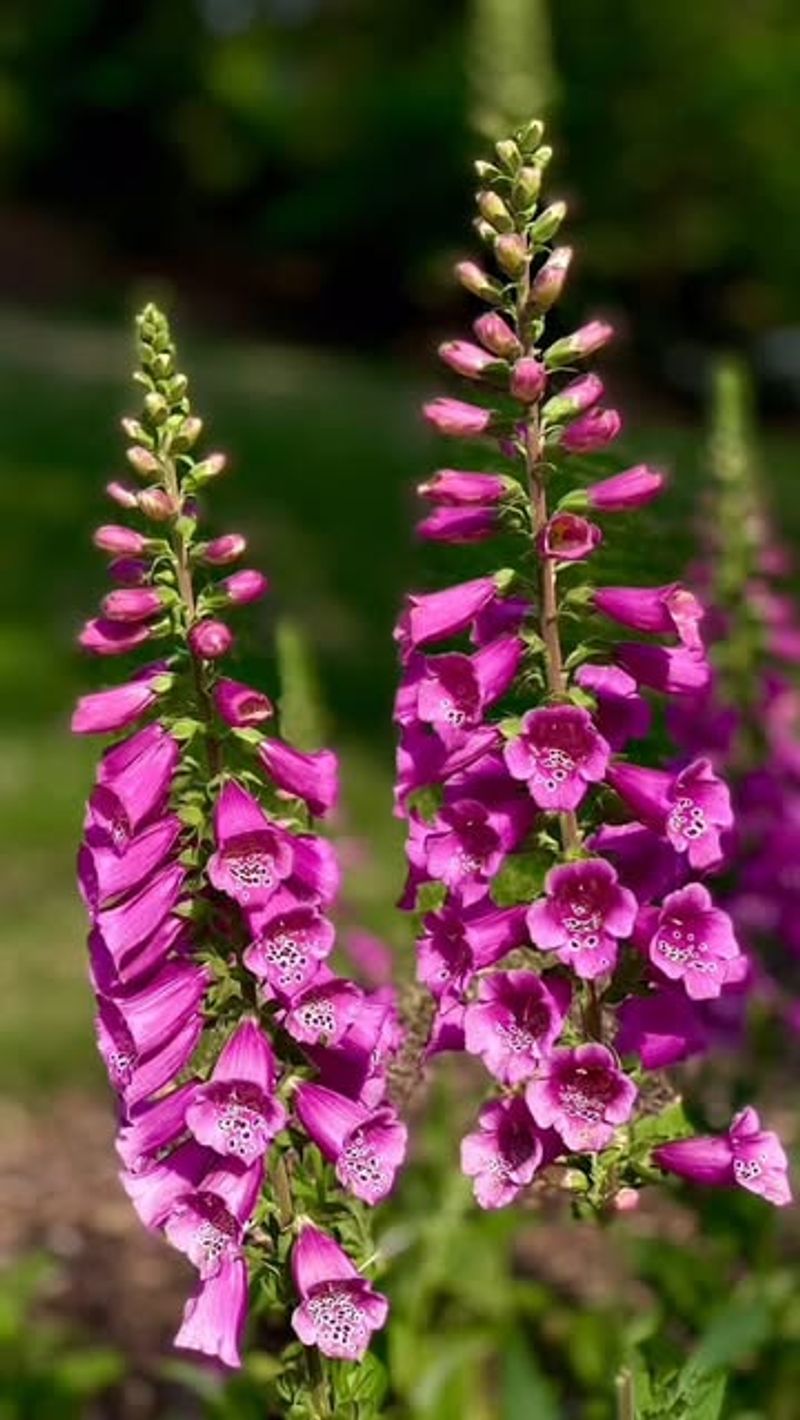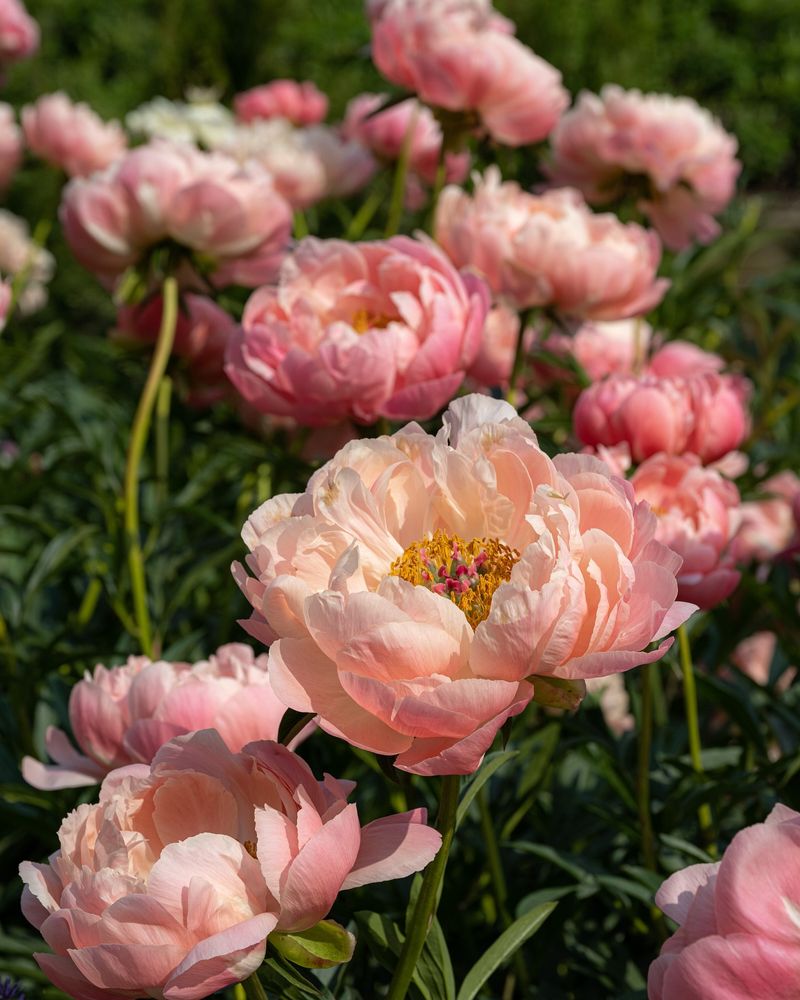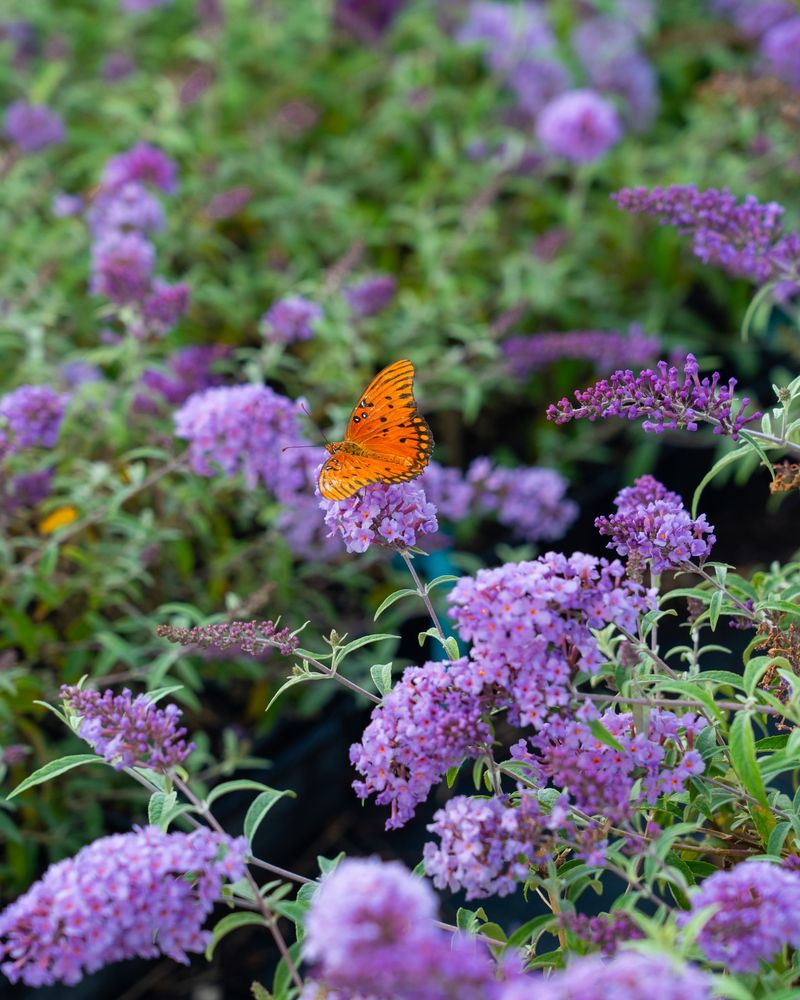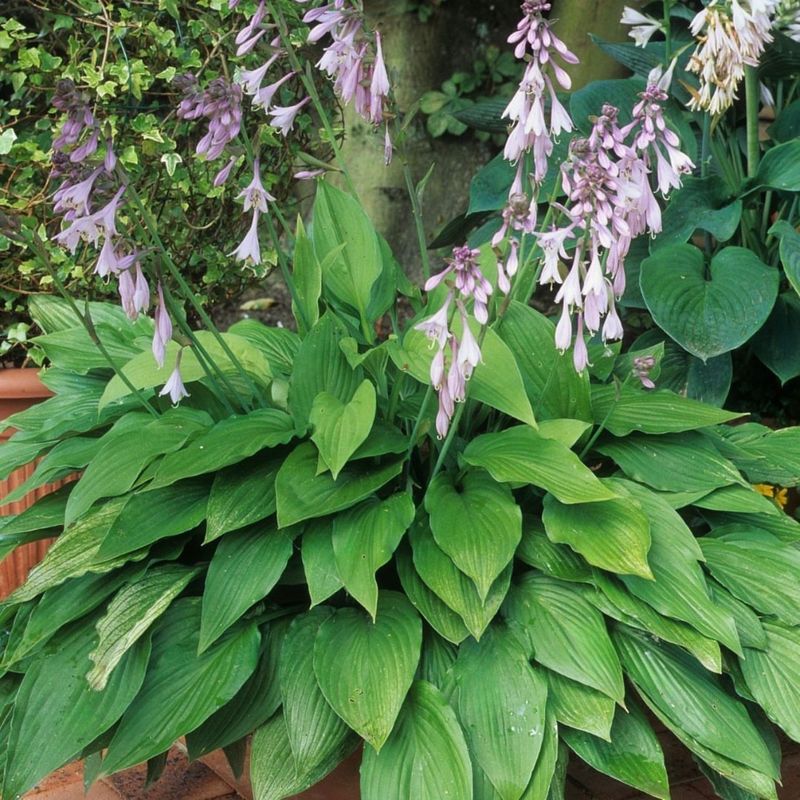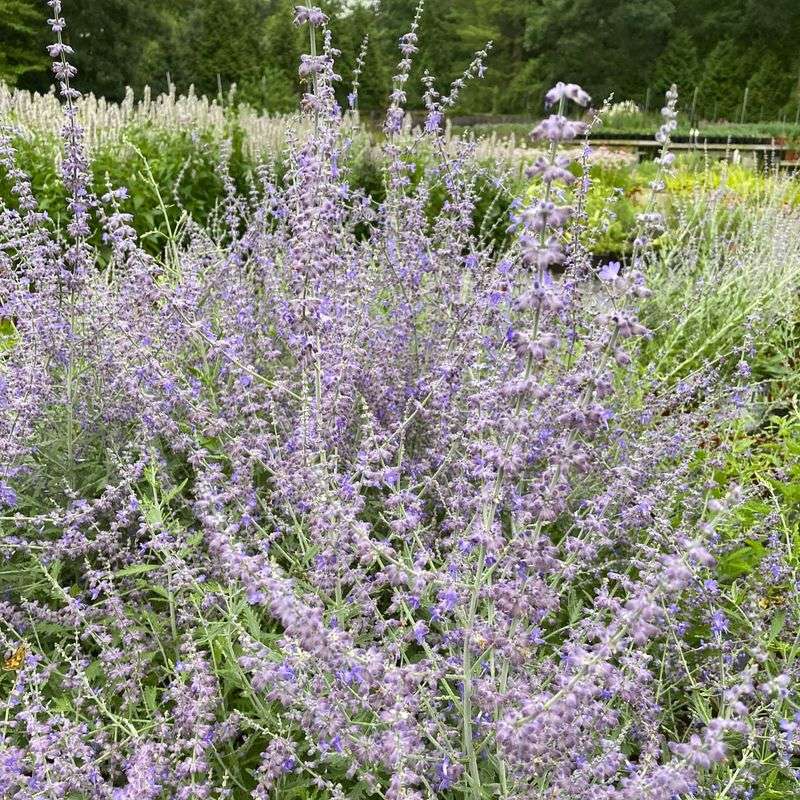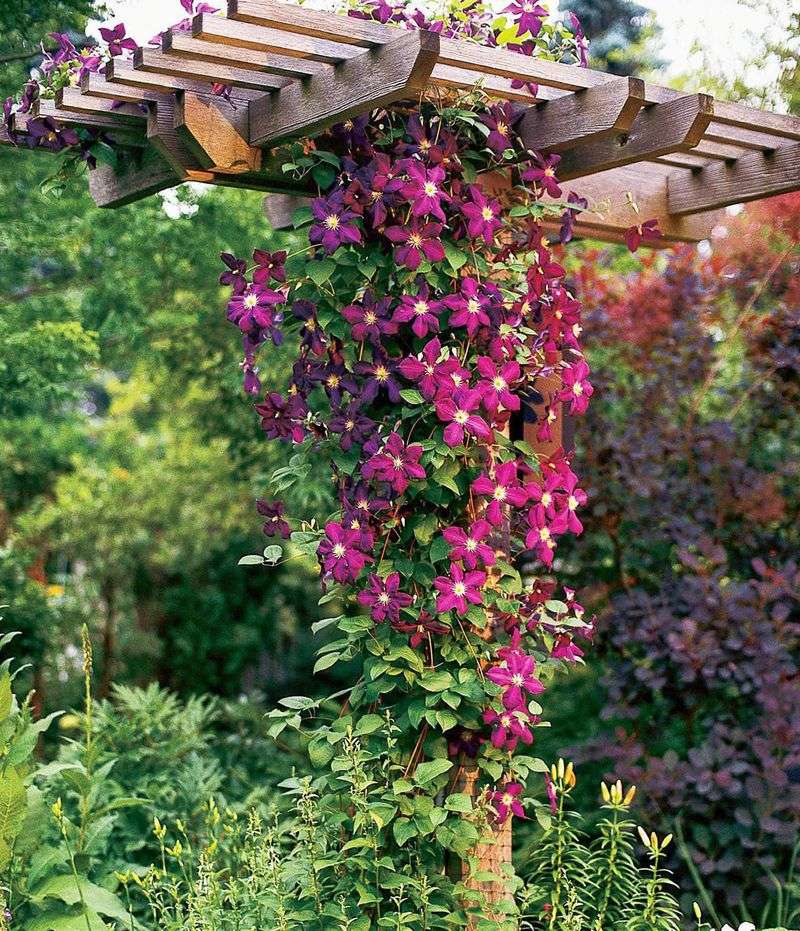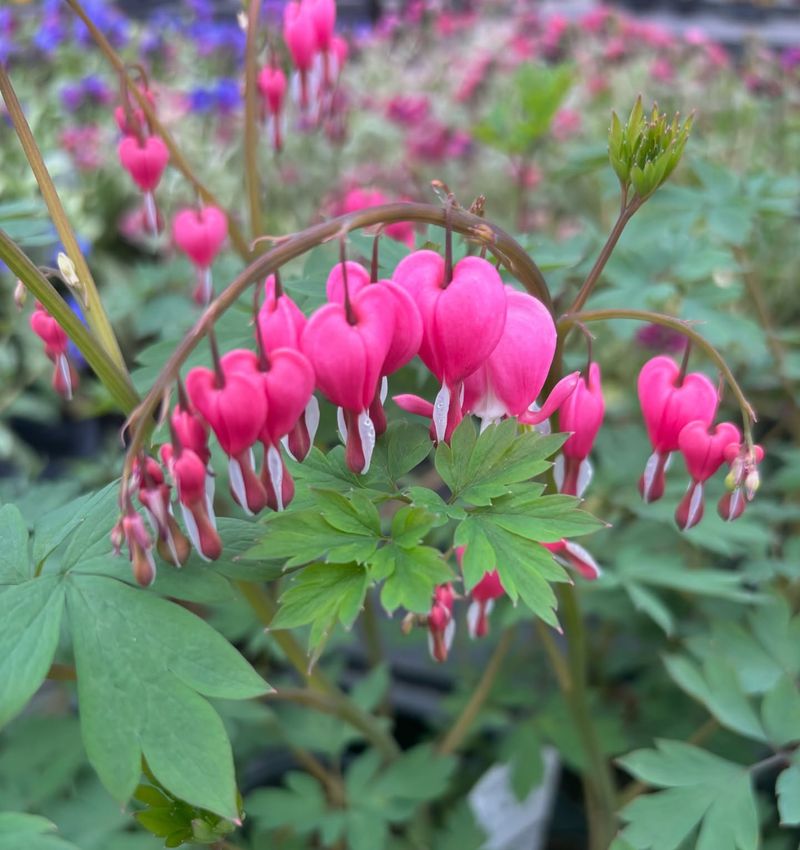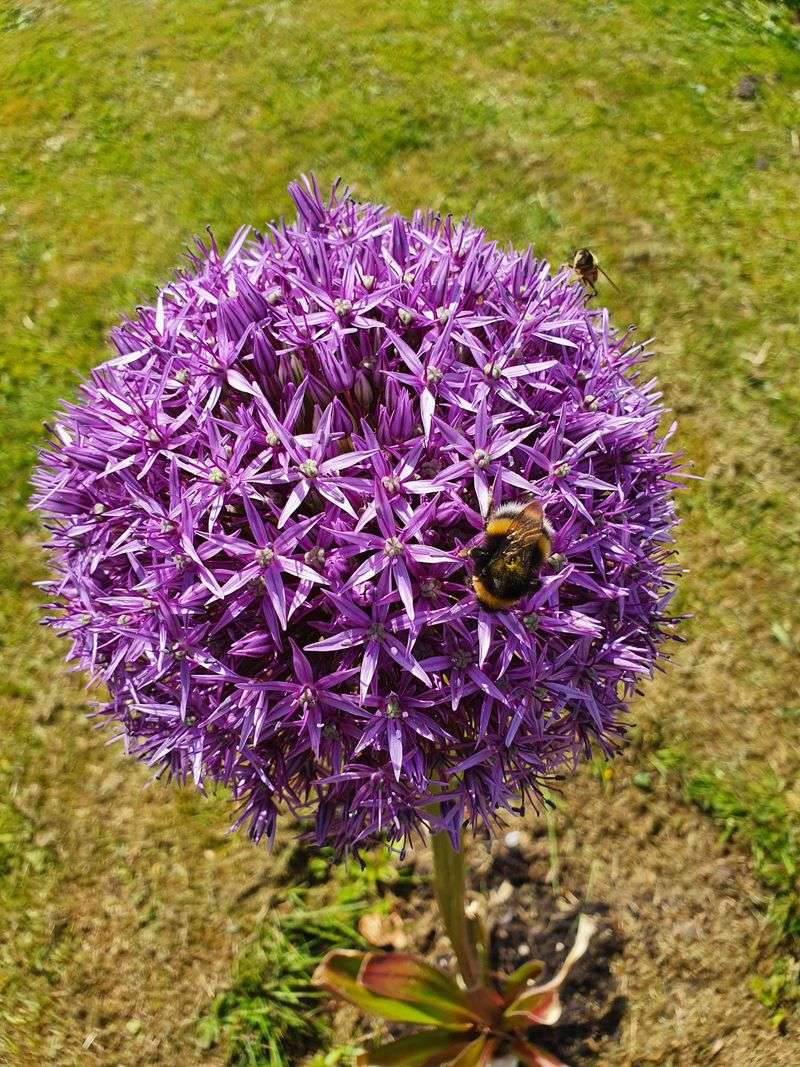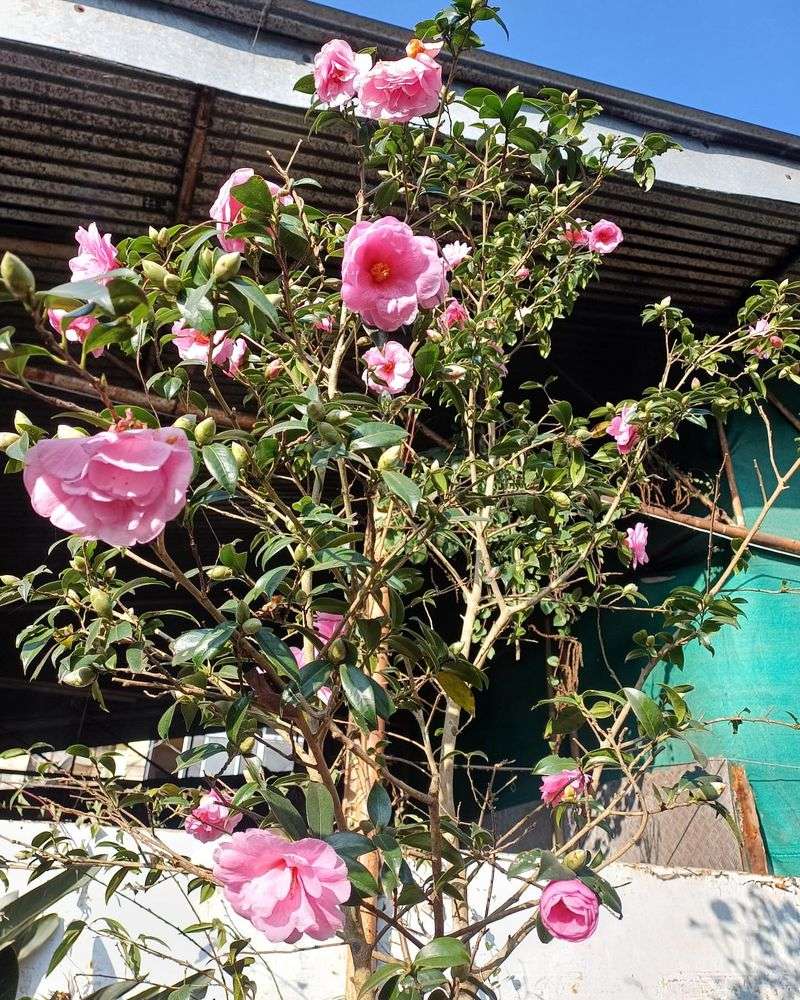Want to turn your garden into something truly special? The right mix of plants can elevate any outdoor space—whether it’s a sprawling backyard or a snug little patio. With color, texture, and movement, your space becomes more than just a yard—it becomes your personal retreat.
From graceful ornamental grasses to vibrant blooms like salvia and echinacea, the right choices bring life to every corner. These 18 standout plants are proven charmers, adding richness and beauty without overwhelming your space.
Whether you’re starting from scratch or freshening things up, these garden picks help you build a sanctuary that feels relaxing, alive, and uniquely yours. With the right planting strategy, home truly begins right outside your door.
1. Hydrangea Bushes
Nothing makes a statement quite like these massive blooms that change color based on your soil’s pH. Blue in acidic soil, pink in alkaline – it’s like having a mood ring in plant form!
I planted three along my fence line, and they’ve become the backdrop for countless family photos. They’re surprisingly hardy despite their delicate appearance.
In fall, snip a few blooms and hang them upside down to dry for beautiful indoor arrangements that last through winter.
2. Japanese Maple
The elegant silhouette of these small trees creates instant garden architecture. Their delicate, star-shaped leaves dance in the slightest breeze, casting dappled shadows below.
Fall brings a spectacular show when the foliage transforms into fiery reds and burnt oranges. My garden visitors always pause to admire mine, even years after planting.
Choose a location with morning sun and afternoon shade to protect those delicate leaves from scorching in hot climates.
3. Lavender
Few plants engage all your senses like this Mediterranean beauty. The silvery-purple spikes release their calming scent whenever you brush past or when summer breezes flow through your garden.
Bees absolutely adore lavender, making it a powerhouse for pollination. Last summer, my patch became a buzzing metropolis of beneficial insects.
Plant it along walkways where you’ll enjoy both its fragrance and its drought-tolerant nature once established. Just remember it hates wet feet!
4. Bird Of Paradise
Bring tropical drama to your garden with these extraordinary blooms that truly resemble exotic birds in mid-flight. The orange and blue flowers emerge from boat-shaped bracts atop tall, sturdy stems.
My specimen started as a humble one-gallon plant and now commands attention as the centerpiece of my garden. The large, banana-like leaves provide excellent textural contrast year-round.
Give them plenty of room to spread, as mature plants can reach 5-6 feet wide and equally tall in ideal conditions.
5. Weeping Cherry Tree
For a few magical weeks each spring, these graceful trees transform into cascading fountains of pink or white blossoms. The arching branches create a living umbrella effect that’s simply breathtaking.
After the flowers fade, the delicate green leaves maintain visual interest throughout summer. Last year, I placed a bench beneath mine to create a peaceful reading nook.
Consider planting where fallen petals will be showcased, like over a pathway or pond – nature’s confetti creating seasonal magic you’ll anticipate all year.
6. Coneflowers (Echinacea)
Tough as nails yet soft in appearance, these native prairie flowers bloom for months on end with minimal fuss. Their daisy-like flowers with raised centers come in purples, whites, yellows, and even sunset oranges.
Goldfinches love to perch on the seed heads in fall, providing delightful garden entertainment. I’ve found them remarkably resilient during our summer dry spells.
Let the seed heads stand through winter instead of deadheading – they’ll feed birds and self-seed just enough to keep your garden naturally refreshed each year.
7. Ornamental Grasses
Movement and sound come alive in your garden with these graceful plants. Their slender blades rustle softly in the breeze, creating a soothing soundtrack for outdoor relaxation.
Fall brings spectacular plumes in silvers, tans, and purples that catch morning light like nothing else. My Miscanthus creates a living privacy screen that’s more interesting than any fence.
Most varieties maintain their structure through winter, providing visual interest when other plants have gone dormant – just cut them back in early spring before new growth emerges.
8. Climbing Roses
Transform vertical spaces with these romantic climbers that combine old-world charm with modern resilience. Train them over arbors, fences, or walls to create stunning living architecture.
The fragrance from my ‘New Dawn’ rose stops visitors in their tracks when they enter the garden gate. Unlike their fussy hybrid tea cousins, climbing varieties often show impressive disease resistance.
For the most flowers, train canes horizontally along supports rather than letting them grow straight up – this tricks the plant into producing more blooming laterals.
9. Coral Bells (Heuchera)
Foliage can be just as spectacular as flowers, and these shade-lovers prove it with leaves in purples, caramels, silvers, and chartreuse. The colors actually intensify in partial shade, making them perfect for brightening dim corners.
Tiny bell-shaped flowers dance above the leaves on wiry stems, attracting hummingbirds to my woodland garden path. Their compact size makes them perfect for edging or container planting.
Mix different colored varieties for a tapestry effect that provides year-round interest, even in winter when many other perennials have disappeared underground.
10. Foxglove
Cottage garden magic comes alive with these towering spires of tubular flowers that seem straight from a fairy tale. The speckled throats of each bell-like bloom create an intricate pattern that rewards close inspection.
Bumblebees disappear completely inside the larger blooms, emerging dusted with pollen. I’ve found they self-seed happily in my garden, creating surprise pops of color in new spots each year.
Most varieties are biennial, forming a rosette of leaves the first year and flowering the next, so stagger plantings for annual shows of these woodland beauties.
11. Peony Bushes
Generations of gardeners have treasured these long-lived perennials that produce massive, fragrant blooms in late spring. A mature plant can produce dozens of dinner-plate sized flowers in whites, pinks, and deep reds.
After flowering, the glossy green foliage continues looking fresh all summer. My grandmother’s peonies still bloom reliably in my garden, over 50 years after she planted them.
Plant them where they won’t need moving – they resent disturbance but can thrive for decades when happy, becoming cherished garden heirlooms passed down through families.
12. Butterfly Bush
True to its name, this fast-growing shrub becomes a living butterfly magnet when its honey-scented panicles of tiny flowers open in summer. The long bloom period extends well into fall when many other plants have finished.
Cutting encourages more flowering, so don’t hesitate to bring stems indoors. My deck container specimen attracts so many pollinators that we’ve started keeping a field guide nearby to identify visitors.
Look for newer, non-invasive varieties that are sterile and won’t self-seed if this is a concern in your region.
13. Hostas
Shade becomes an asset rather than a challenge when these foliage champions enter your garden. Their leaves range from tiny to enormous, with colors spanning blue-green, chartreuse, variegated cream, and nearly everything between.
Surprisingly architectural for such easy-care plants, they create living sculptures in dark corners. The miniature varieties in my container collection prove they’re not just for large landscapes.
Summer brings delicate flower stalks with lily-like blooms that attract hummingbirds, adding another dimension to these primarily foliage-focused garden workhorses.
14. Russian Sage
Cloud-like masses of tiny lavender-blue flowers hover above silvery foliage on this drought-tolerant perennial. The effect is both airy and substantial, softening hard landscape elements like stone walls or steps.
Deer and rabbits avoid it thanks to the aromatic foliage. After three seasons in my xeriscape border, it’s never needed supplemental water once established, even during July heat waves.
Pair with ornamental grasses and coneflowers for a prairie-inspired planting that laughs at tough conditions while looking effortlessly beautiful all season long.
15. Clematis Vines
Walls, fences, and mailbox posts transform into flowering masterpieces when these versatile climbers get established. Different varieties bloom in spring, summer, or fall, with flower forms ranging from star-shaped to fully double blossoms.
Unlike some aggressive vines, they climb using leaf stems rather than suckers or aerial roots, making them gentler on structures. My ‘Jackmanii’ covers a trellis with purple flowers for months, while barely needing any ground space.
Remember the old gardener’s saying: “Head in the sun, feet in the shade” – they love cool roots but full sun on their foliage.
16. Bleeding Heart
Romance personified in plant form, with arching stems of heart-shaped blooms that dangle like tiny Valentine lockets. The classic variety offers pink hearts with white tips, while newer selections include pure white and rich rose.
Early spring woodland gardens come alive when these beauties emerge. Mine create a perfect companion for emerging hostas and ferns, blooming just when the garden needs a focal point.
Don’t panic when they die back in summer heat – this is normal behavior for these spring ephemeral plants that return reliably each year when temperatures cool.
17. Allium Globes
Soccer-ball sized spheres of star-shaped florets perched atop slender stems create botanical fireworks in the late spring garden. Their architectural form provides both height and whimsy among lower-growing perennials.
Even after the purple or white flowers fade, the dried seedheads maintain their globe shape for months. Last fall, I spray-painted some silver for holiday decorations – a garden gift that kept giving.
Being members of the onion family, they’re naturally resistant to deer, rabbits, and other garden nibblers who dislike their subtle scent.
18. Camellia Shrubs
Glossy evergreen leaves provide year-round structure, while perfect rose-like blooms appear when the garden needs them most – in fall, winter, or early spring depending on the variety.
The flowers last for weeks rather than days, often opening in succession over months. My winter-blooming specimen outside the kitchen window provides daily joy during the coldest, darkest season.
With thousands of varieties available, you can find flowers in nearly every shade of white, pink, red, and combinations thereof, from simple single forms to fully double blossoms.

